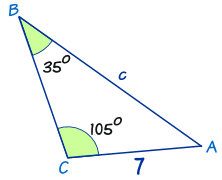Hello! Today I will talk about the top five things that I learned in Precalculus 11.
For my first topic, I wanted to go over solving by completing the square. As a refresher, completing the square occurs when an equation is quadratic and follows the template for general form ( . )
So, as always:
Say you wanted to solve .
49 is a perfect square: 7 multiplied by 7. We can put 49 and beneath a radical and come up with our answer: 7.
For my second topic, I wanted to go over finding the vertex. The easiest way to find the vertex is in vertex form ( ). Keep an eye on “p” and “q”, because that is where you are going to find your vertex.
Say you had to find the vertex for the equation . Value “p” will always have an opposite sign than what it appears to have. In other words, if value “p” is negative, then it is positive in actuality. If value “p” is positive, then it is negative in actuality. Don’t let it trip you up!
Knowing this information, we know that value “p” will be 2 and value “q” is going to be 9. To clarify, we write the vertex as (2,9) so it is more clear as it is an actual point on a graph.

For my third topic, I wanted to go over the sine law. Recall the law of sines. .
Say we wanted to find the value of side c.
We first input the values that we know: . We ignore the rest that we are not using as it does not have any use to us in finding side c.
We cross multiply and rearrange the equation to solve for side c. We should have the answer of c = 11.8.
For my fourth topic, I wanted to go over multiplying & dividing rational expressions. Something to keep in mind is that a variable can not equal zero when it is in the denominator. Therefore, we need to add restrictions to ensure that the denominator will not equal zero.
Say you wanted to simplify divided by
. We can cross multiply to simplify here. The two variables will equal one (cancel out) since one is in the numerator and one is in the denominator. We can then simplify
, which will then yield
. Since the variable n is in the denominator in the original expression, and we know that n cannot equal zero, we must state that in our answer.
For my fifth & final topic, I wanted to go over factoring! Factoring is a fundamental skill that we expanded upon in Precalculus 11.
Say you wanted to factor .
If you were to multiply two expressions together, what would yield ? Well, by taking a look at
, we know that we need two a’s to equal
. And to yield -9, we know that we need two 3’s to equal -9, but one has to be negative, or we will get a different answer than
.
So, with that knowledge, we now have a+3 & a-3. But when you’re factoring, it’s important to have the brackets around each individual expression so that we know to multiply.
Our final answer should be .
During my time in Precalculus 11, I found the course less daunting and more interesting as I explored new directions within the grand concept of math. It was an experience that challenged me and helped me think in different ways. It expanded my critical thinking core competency and gave me a new respect for math in general and how much is involved in the subject.